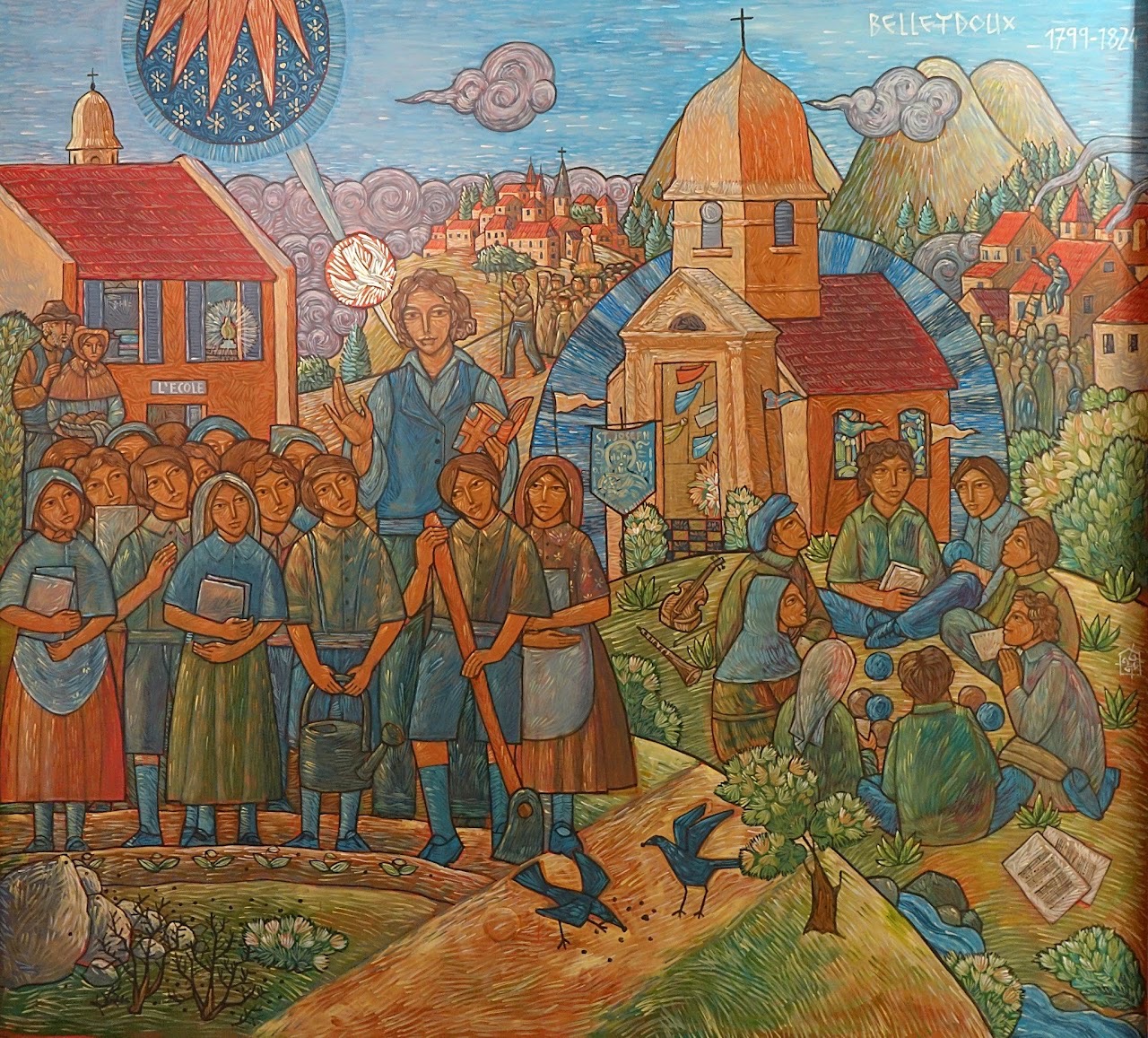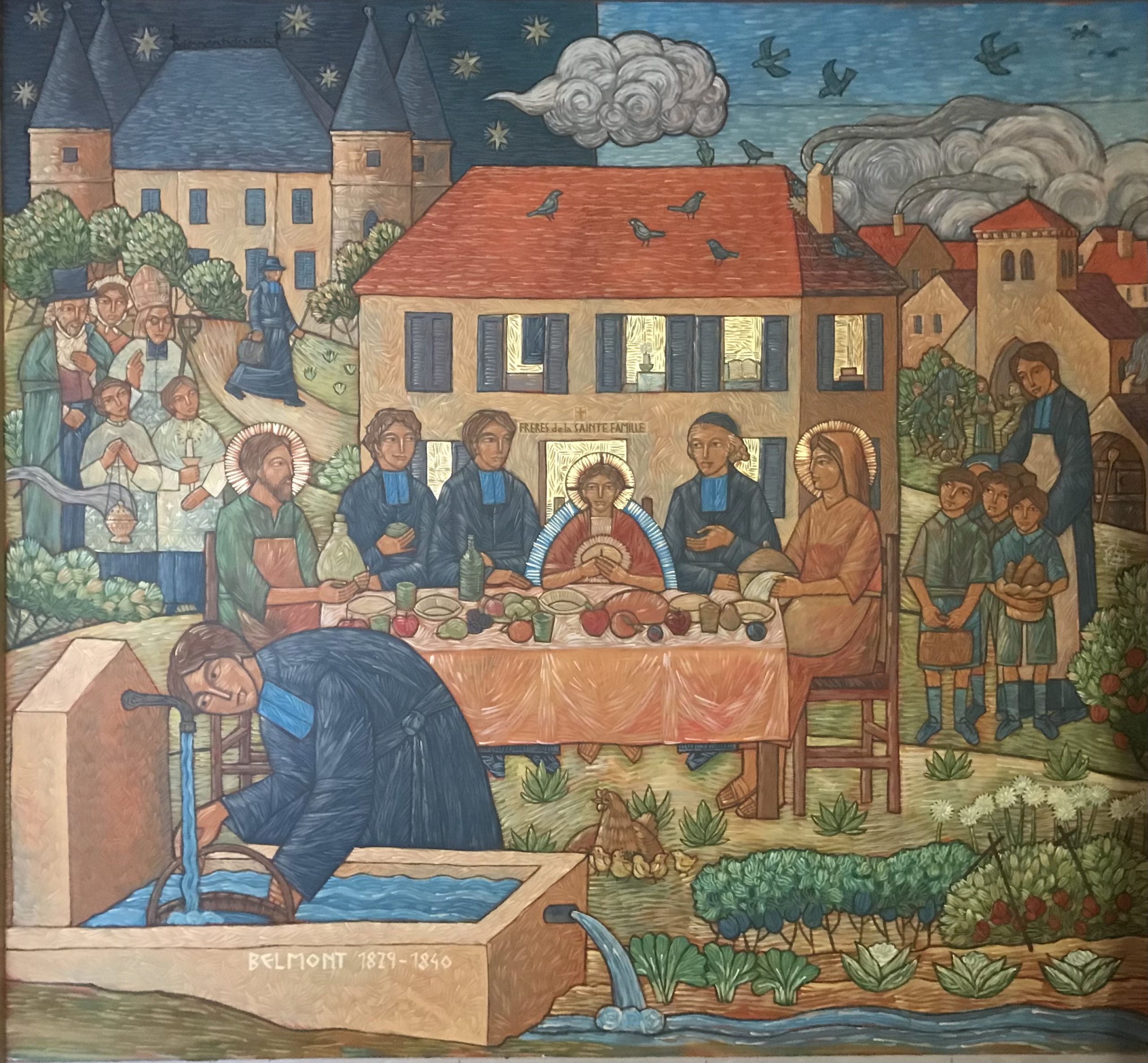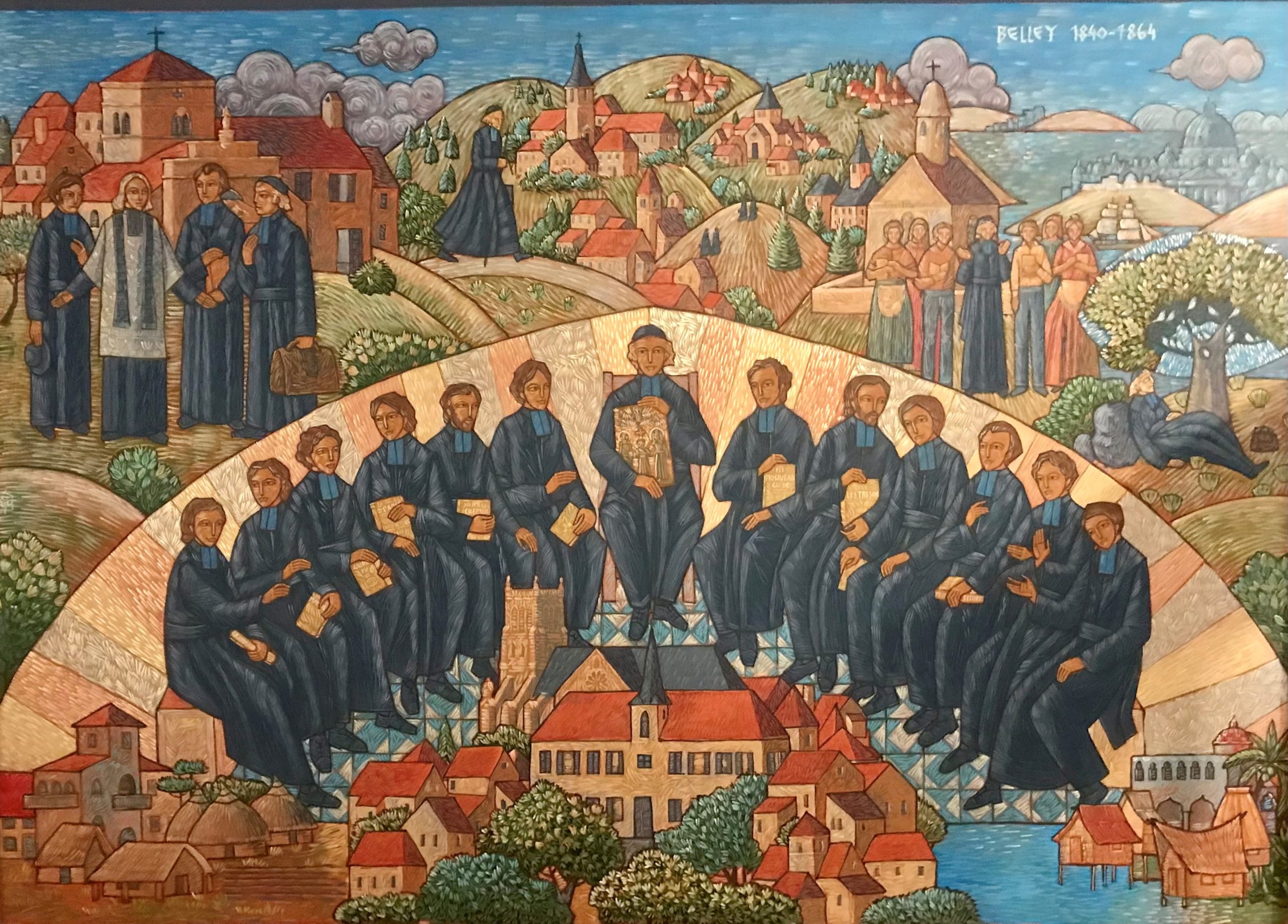Gabriel Taborin lived in France in the first half of the 19th century and was a religious Brother who founded the Congregation of the Brothers of the Holy Family.
Belleydoux period (1799-1824). Gabriel was born in Belleydoux (Ain) in 1799 into a Christian family that had a profound influence on him. During his formative years, he took part in the awakening of the laity following the French Revolution. From an early age, he began a series of activities in his native parish. He moved from religious games for children to a period of gradual empowerment: he became a cantor, sacristan, catechist and school teacher in his village. In this context, the young Gabriel soon discovered God’s call to religious life. To respond to this call, he sought out a religious community and, not finding one that corresponded to his desires, circumstances led him to found one himself.
Period of itinerant life (1824-1829).
In various places in the dioceses of Saint-Claude (Jura) and then Belley (Ain), he continued Belleydoux’s “long experience” by making himself available to the parish priests as a teacher and catechist; he tried to “teach others” these same activities. The first concrete form he gives to his lay religious vocation is that of the Brothers of St Joseph.
Belmont period (1829-1840).
After overcoming many difficulties, he founded the Institute of the Brothers of the Holy Family at Belmont, in the diocese of Belley. Brother Gabriel was finally able to realise his project: he drew up the identity of the Brother in the Conduite, a rule of life approved by Bishop Devie, formed groups of postulants and novices, and sent the first Brothers as sacristans to Belley Cathedral and as teachers to various schools.
Belley period (1840-1864).
He arrived in this city, the seat of the diocese, with a large community (more than forty people). Brother Gabriel devoted himself until the end of his days to the formation of his Brothers and the consolidation of the Congregation. He obtains the approval of the Institute from Pope Gregory XVI and King Charles Albert of Sardinia.
- He frequently visits the communities (almost all state primary schools) and parishes where the Brothers work.
- He writes some books for children and young people, for families and parishes, in which he combines cultural promotion and evangelisation.
- He gathers the Brothers together annually to foster “family spirit” and to take care of their pedagogical, human and spiritual formation.
- He personally takes care of the new foundations and the construction of the Mother House.
While retaining his nostalgia for the contemplative life, which he only carried out for a few years in the monastery of Tamié (Savoy), he encouraged the activity of the Brothers in the service of Christian education in rural parishes and liturgical animation in churches, open to “all kinds of good works”. The Institute is active in 16 dioceses: eastern France and some cities such as Paris, Tours and Lyon.
Driven by a missionary spirit, he sent a group of four Brothers to the United States (Minnesota).
He sought the support of individuals and institutions for his Institute and found, in the midst of much misunderstanding and opposition, those who esteemed and welcomed his work, such as St. John Mary Vianney, the Curé of Ars, in whom he found friendship and important support. At the end of his life, his Institute has about 200 religious working in more than fifty schools and other activities.
Gabriel’s life is profoundly marked by the cross: he pays in his person as a “religious Brother” the price for a choice of life which constitutes a call to a greater fraternity both for the Church and for the world.
.



